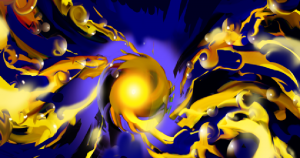
World’s Tiniest Nano-Engine, A Million Times Smaller Than An Ant Built By Scientists
The tiniest engine is developed by scientists, which is just a few billionths of metre in size. These engines are powered by light which can navigate in water and sense the environment around them and also the living cells to fight the disease.
Using the tiny particles of gold, are bound together with temperature responsive polymers in the form of gel in the prototype. Large amounts of elastic energy in a fraction of a second are stored when it is heated to a certain temperature with a laser.

The gold nanoparticles are binding together into tight clusters when they are forced. The polymers take on water and expand when his device is cooled, and the gold nanoparticles are strongly and quickly pushed apart.
“It’s like an explosion. We have hundreds of gold balls flying apart in a millionth of a second when water molecules inflate the polymers around them,” said Tao Ding from the University of Cambridge in the UK.
“We know that light can heat up water to power steam engines. But now we can use light to power a piston engine at the nanoscale,” said VentsislavValev.
These tiny particles exert forces that are several orders of magnitude larger than those for any other device produced previously with a force per unit weight which is far better than any motor or muscle.
The Van der Waals energy which is the attraction between atoms and molecules are suggested by researchers suggests, which turns into the elastic energy of polymers and release it very quickly.
“Like real ants, they produce large forces for their weight. The challenge we now face is how to control that force for nano-machinery applications,” Baumberg said.
“The smart part here is we make use of Van der Waals attraction of heavy metal particles to set the springs (polymers) and water molecules to release them, which is very reversible and reproducible,” said Baumberg.